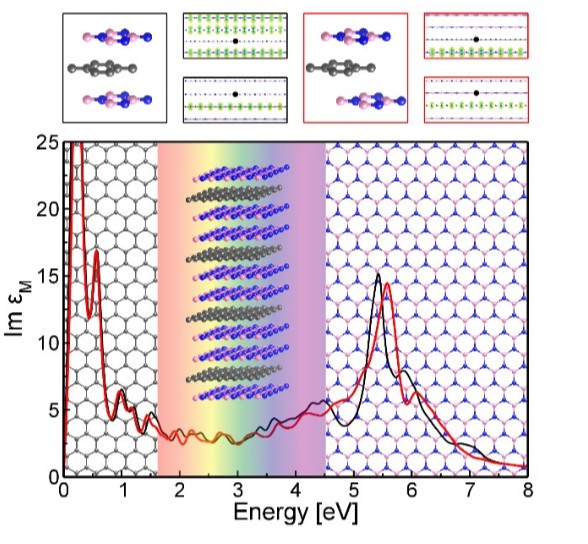Caterina Cocchi
Physics Department, Carl von Ossietzky Universität Oldenburg
The possibility to assemble two-dimensional materials to form vertical heterostructures held together by van der Waals forces has open unprecedented perspectives to tune the properties of materials at the nanoscale. The huge complexity arising from combining different materials and the exotic phenomena that can consequently manifest themselves calls for in-depth theoretical studies based on state-of-theart ab initio methods. Density-functional theory and many-body perturbation theory are ideally suited for this purpose. In this seminar, I will present recent results obtained in this framework on van der Waals heterostructures formed by encapsulating graphene into hexagonal boron nitride (h-BN) [1,2] and by interfacing the two transition-metal dichalcogenide monolayers ZrS2 and HfS2 [3]. In the first example, I will illustrate how the controlled intercalation of graphene between h-BN multilayers can significantly enhance light-matter interaction in the resulting heterostructure and lead to charge-transfer excitations in the visible region [1,2] as well as to an overall stacking-dependent character of the electron-hole pairs [4]. In the ZrS2/HfS2 heterobilayer, I will focus on the peculiar type-I level alignment, which, combined with the large hybridization between the two monolayers, gives rise to a non-trivial (de)localization of the electron and hole components of the exciton [3].
References
[1] W. Aggoune, C. Cocchi, et al., J. Phys. Chem. Lett. 8, 1464 (2017).
[2] W. Aggoune, C. Cocchi, et al., submitted (2020); arXiv:2004.06031.
[3] K.-W. Lau, C. Cocchi, and C. Draxl, Phys. Rev. Materials 3, 074001 (2019).
[4] W. Aggoune, C. Cocchi, et al., Phys. Rev. B (R) 97, 241114 (2018).
The figure is taken from Ref. [1].
Place: The seminar will be given using Zoom platform. Please contact to get an invitation.

